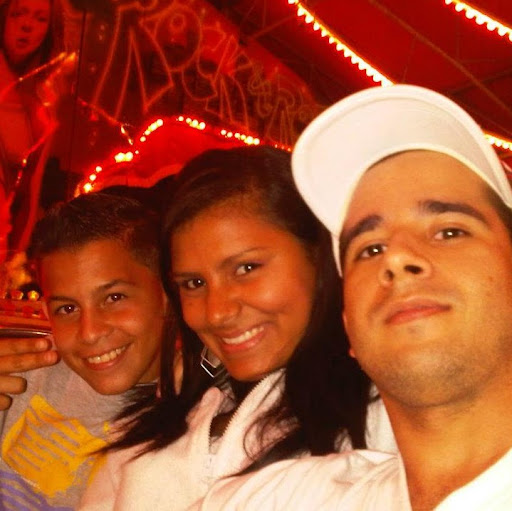Irving J Sanchez
age ~50
from Blaine, MN
- Also known as:
-
- Irving Sanchez Roman
- Irvin J Sanchez
- Irving J Roman
- Roman Irving Sanchez
Irving Sanchez Phones & Addresses
- Blaine, MN
- 11171 Aberdeen St, Minneapolis, MN 55449 • 7635611226
- 11171 Aberdeen St NE UNIT G, Minneapolis, MN 55449 • 7635611226
- Brooklyn Park, MN
- Anoka, MN
- Southbridge, MA
- Yabucoa, PR
- 8316 Zane Ave N APT 207, Minneapolis, MN 55443 • 7635611226
Work
-
Position:Production Occupations
Education
-
Degree:Associate degree or higher
Us Patents
-
Medical Device And Method For Cardiac Pacing And Sensing
view source -
US Patent:20230107061, Apr 6, 2023
-
Filed:Aug 26, 2022
-
Appl. No.:17/822681
-
Inventors:- Minneapolis MN, US
Alfonso ARANDA HERNANDEZ - Maastricht, NL
Timothy A. EBELING - Circle Pines MN, US
Michael W. HEINKS - New Brighton MN, US
Jean E. HUDSON - Blaine MN, US
Troy E. JACKSON - Rogers MN, US
Yuanzhen LIU - Minneapolis MN, US
Irving J. SANCHEZ - Blaine MN, US
James A. VANDER HEYDEN - Delano MN, US
Xusheng ZHANG - Shoreview MN, US -
International Classification:A61N 1/365
-
Abstract:A medical device is configured to receive cardiac electrical signals and sense ventricular event signals from the cardiac electrical signals. The medical device may start a validation window in response to sensing a ventricular event signal and determine if the ventricular event signal is a valid event signal or an invalid event signal based on processing of a different cardiac electrical signal than the cardiac electrical signal from which the ventricular event signal was sensed.
-
Medical Device And Method For Detecting Tachyarrhythmia
view source -
US Patent:20230100431, Mar 30, 2023
-
Filed:Aug 29, 2022
-
Appl. No.:17/823055
-
Inventors:- Minneapolis MN, US
Alfonso ARANDA HERNANDEZ - Maastricht, NL
Timothy A. EBELING - Circle Pines MN, US
Saul E. GREENHUT - Denver CO, US
Michael W. HEINKS - New Brighton MN, US
Jean E. HUDSON - Blaine MN, US
Troy E. JACKSON - Rogers MN, US
Irving J. SANCHEZ - Blaine MN, US
James A. VANDER HEYDEN - Delano MN, US
Xusheng ZHANG - Shoreview MN, US -
International Classification:A61B 5/363
A61B 5/35 -
Abstract:A medical device is configured to sense first ventricular event signals from a first cardiac electrical signal and sense second ventricular event signals from a second cardiac electrical signal. The medical device is configured to determine sensed event data in response to the first ventricular event signals and the second ventricular event signals. The medical device may select one of the first cardiac electrical signal or the second cardiac electrical signal for providing input for tachyarrhythmia detection based on the sensed event data.
-
Multi-Threshold Sensing Of Cardiac Electrical Signals In An Extracardiovascular Implantable Cardioverter Defibrillator
view source -
US Patent:20200094065, Mar 26, 2020
-
Filed:Nov 26, 2019
-
Appl. No.:16/696129
-
Inventors:- Minneapolis MN, US
Timothy A. EBELING - Circle Pines MN, US
Saul E. GREENHUT - Denver CO, US
Michael W. HEINKS - New Brighton MN, US
Irving J. SANCHEZ - Blaine MN, US
Paul R. SOLHEIM - Blaine MN, US
Xusheng ZHANG - Shoreview MN, US
Gerald P. ARNE - Wayzata MN, US -
International Classification:A61N 1/39
A61N 1/05
A61B 5/0456
A61B 5/00
A61B 5/042 -
Abstract:An implantable medical device system capable of sensing cardiac electrical signals includes a sensing circuit, a therapy delivery circuit and a control circuit. The sensing circuit is configured to receive a cardiac electrical signal and sense a cardiac event in response to the signal crossing a cardiac event sensing threshold. The therapy delivery circuit is configured to deliver an electrical stimulation therapy to a patient's heart via the electrodes coupled to the implantable medical device. The control circuit is configured to control the sensing circuit to set a starting value of the cardiac event sensing threshold and hold the starting value constant for a sense delay interval. The control circuit is further configured to detect an arrhythmia based on cardiac events sensed by the sensing circuit and control the therapy delivery circuit to deliver the electrical stimulation therapy in response to detecting the arrhythmia.
-
Multi-Threshold Sensing Of Cardiac Electrical Signals In An Extracardiovascular Implantable Cardioverter Defibrillator
view source -
US Patent:20180339164, Nov 29, 2018
-
Filed:Aug 3, 2018
-
Appl. No.:16/054089
-
Inventors:- Minneapolis MN, US
Timothy A. EBELING - Circle Pines MN, US
Saul E. GREENHUT - Aurora CO, US
Michael W. HEINKS - New Brighton MN, US
Irving J. SANCHEZ - Blaine MN, US
Paul R. SOLHEIM - Blaine MN, US
Xusheng ZHANG - Shoreview MN, US
Gerald P. ARNE - Wayzata MN, US -
International Classification:A61N 1/39
A61N 1/05
A61B 5/0456
A61N 1/362
A61N 1/365 -
Abstract:An implantable medical device system capable of sensing cardiac electrical signals includes a sensing circuit, a therapy delivery circuit and a control circuit. The sensing circuit is configured to receive a cardiac electrical signal and sense a cardiac event in response to the signal crossing a cardiac event sensing threshold. The therapy delivery circuit is configured to deliver an electrical stimulation therapy to a patient's heart via the electrodes coupled to the implantable medical device. The control circuit is configured to control the sensing circuit to set a starting value of the cardiac event sensing threshold and hold the starting value constant for a sense delay interval. The control circuit is further configured to detect an arrhythmia based on cardiac events sensed by the sensing circuit and control the therapy delivery circuit to deliver the electrical stimulation therapy in response to detecting the arrhythmia.
-
Multi-Threshold Sensing Of Cardiac Electrical Signals In An Extracardiovascular Implantable Cardioverter Defibrillator
view source -
US Patent:20170312534, Nov 2, 2017
-
Filed:Apr 29, 2016
-
Appl. No.:15/142171
-
Inventors:- Minneapolis MN, US
Timothy A. EBELING - Circle Pines MN, US
Saul E. GREENHUT - Aurora CO, US
Michael W. HEINKS - New Brighton MN, US
Irving J. SANCHEZ - Blaine MN, US
Paul R. SOLHEIM - Blaine MN, US
Xusheng ZHANG - Shoreview MN, US
Gerald P. ARNE - Wayzata MN, US -
International Classification:A61N 1/39
A61N 1/05
A61N 1/39
A61N 1/39 -
Abstract:An implantable medical device system capable of sensing cardiac electrical signals includes a sensing circuit, a therapy delivery circuit and a control circuit. The sensing circuit is configured to receive a cardiac electrical signal and sense a cardiac event in response to the signal crossing a cardiac event sensing threshold. The therapy delivery circuit is configured to deliver an electrical stimulation therapy to a patient's heart via the electrodes coupled to the implantable medical device. The control circuit is configured to control the sensing circuit to set a starting value of the cardiac event sensing threshold and hold the starting value constant for a sense delay interval. The control circuit is further configured to detect an arrhythmia based on cardiac events sensed by the sensing circuit and control the therapy delivery circuit to deliver the electrical stimulation therapy in response to detecting the arrhythmia.
Resumes

Assistant Store Manager
view sourceLocation:
Minneapolis, MN
Work:
Walmart
Assistant Store Manager
Assistant Store Manager
Education:
Minnesota State University, Mankato

Irving Sanchez
view sourceSkills:
Leadership
Management
Microsoft Excel
Microsoft Office
Microsoft Word
Management
Microsoft Excel
Microsoft Office
Microsoft Word

Irving Sanchez
view source
Irving Sanchez
view source
Irving A Sanchez
view source
Irving Sanchez
view sourceFlickr
Youtube
Classmates

Irving Sanchez
view sourceSchools:
Edward F. Parthum Elementary School Lawrence MA 2000-2004
Community:
Margaret Knowles

Irving Sanchez
view sourceSchools:
St. Petersburg Catholic High School St. Petersburg FL 1973-1977
Community:
Ken Anderson, Chris Allison

Irving Sanchez
view sourceSchools:
Minneapolis Vocational Minneapolis MN 1970-1974

Irving Sanchez
view sourceSchools:
Colegio Angeles Custodios High School San Juan NJ 2002-2006

Irving Sanchez
view sourceSchools:
Colegio Santiago Apostol High School Fajardo NJ 1985-1989
Community:
Janet Burgos, Shirley Lopez, Claudia Morgan, Ronald Braden

Edward F. Parthum Element...
view sourceGraduates:
Jordan Smith (2001-2005),
Carlota Castillo (2001-2005),
Irving Sanchez (2000-2004),
Alexandra Sanchez (2000-2004)
Carlota Castillo (2001-2005),
Irving Sanchez (2000-2004),
Alexandra Sanchez (2000-2004)

North Rockland High Schoo...
view sourceGraduates:
Weendy Benavides (1987-1991),
Bill Sarno (1980-1984),
Leidy Placido (1995-1999),
Irving Sanchez (1999-2003),
Katitha Lopez (1997-2001)
Bill Sarno (1980-1984),
Leidy Placido (1995-1999),
Irving Sanchez (1999-2003),
Katitha Lopez (1997-2001)

Colegio Angeles Custodios...
view sourceGraduates:
Daisy de Jesus (1982-1986),
Oswaldo Crespo (1986-1990),
Suheily Carrion (2002-2006),
Irving Sanchez (2002-2006),
Andres Antonio (2002-2006)
Oswaldo Crespo (1986-1990),
Suheily Carrion (2002-2006),
Irving Sanchez (2002-2006),
Andres Antonio (2002-2006)

Jovelyn Irving Sanchez
view source
Irving Sanchez
view source
Irving Sanchez
view source
Irving Sanchez
view source
Irving Sanchez
view source
Irving Sanchez Moya
view source
John Irving Sanchez
view source
Irving Sanchez
view sourceGoogleplus

Irving Sanchez
Work:
Gefen.S - Productor
Skim - Musico
Tottus - Logistica (soporte ingeniería)
Skim - Musico
Tottus - Logistica (soporte ingeniería)
Education:
Conservatorio nacional de Música - Guitarra, Orson Welles

Irving Sanchez
Education:
Cetis 2 "David Alfaro Siqueiros" - Arquitectura
About:
Hola, creo que si estas leyendo esto es por que me conoces y si no pues agrega y a utilizar la redes sociales para lo que fueron creadas.
Tagline:
Amm...?
Bragging Rights:
Amm... aprendiendo a tocar guitarra, fui por un tiempo guia en el museo nacional de arte, y pronto sere millonario¡¡

Irving Sanchez
Work:
H. Ayuntamiento de Ecatepec de Morelos - Administrativo (2010)
Education:
Tecnologico de Estudios Superiores de Ecatepec - Lic. Informatica

Irving Sanchez
Work:
En mi casa - Filosofo
About:
Simplemente uno mas... un humano mas en el planeta... nada eb el universo y todo en el mio...
Tagline:
No soy un genio... pero soy ingen ingenioso ... soy distraido pero, no estupido.
Bragging Rights:
No necesito mcho para estar tranquilo...

Irving Sanchez
Education:
Espa - Bachiller en letras

Irving Sanchez
Education:
Dorsey

Irving Sanchez
Work:
Cassia Intituto Gastronomico y de Servicios - Chef Instructor (2012)

Irving Sanchez
Plaxo

Irving Sanchez
view sourceCompuSoluciones
Myspace
Get Report for Irving J Sanchez from Blaine, MN, age ~50














